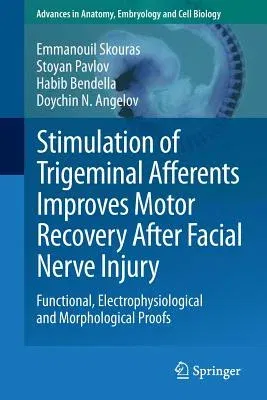Emmanouil Skouras
(Author)Stimulation of Trigeminal Afferents Improves Motor Recovery After Facial Nerve Injury: Functional, Electrophysiological and Morphological Proofs (2013Paperback - 2013, 16 December 2012

Qty
1
Turbo
Ships in 2 - 3 days
In Stock
Free Delivery
Cash on Delivery
15 Days
Free Returns
Secure Checkout

Part of Series
Advances in Anatomy, Embryology and Cell Biology
Print Length
110 pages
Language
English
Publisher
Springer
Date Published
16 Dec 2012
ISBN-10
3642333109
ISBN-13
9783642333101
Description
Product Details
Book Edition:
2013
Book Format:
Paperback
Country of Origin:
NL
Date Published:
16 December 2012
Dimensions:
22.86 x
15.24 x
1.02 cm
Genre:
Clinical (Medicine)
ISBN-10:
3642333109
ISBN-13:
9783642333101
Language:
English
Location:
Berlin, Heidelberg
Pages:
110
Publisher:
Weight:
181.44 gm